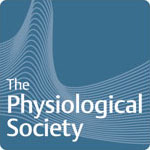Assessing skin sensitivity – locating different receptors
Class practical
On the people who have agreed to be tested, mark out an area of 1 cm square on the back of the hand, divided into 25 smaller squares in a 5X5 grid (see note 1 and attached sheet of grids). Apply each stimulus in each of the smaller squares and record whether or not the subject can feel the stimulus.
Lesson organisation

This procedure has been developed with the help of the Physiological Society.
Students could work in threes – one being touched, one touching, and one recording the results. It is important that the person whose skin is being assessed has volunteered to be tested, that they are comfortable with the idea of being touched by their colleague, and that the methods of testing do not cause damage to the skin.
Input the class data to a final results table so that individual student results remain anonymous.
Apparatus and Chemicals
For each group of students:
Grid square (Note 1)
Safety razor
Mounted bristle/s (Von Frey bristle), 1 or more if available (Note 2)
Sharp point, 1 – such as a sharpened pencil, clean mounted needle, or pinwheel aesthesiometer (Note 3)
Health & Safety and Technical notes
The hazard in this practical is that students are touching one another’s skin with implements that could cause damage. Students behaving in a calm, methodical, purposeful way should not cause one another any harm.
1 Cut out some 1 cm squares of graph paper marked in a 2 mm grid. Photocopy onto acetate sheet with space between them. Cut into individual sections. Use a fine water-soluble marker pen to trace the grid, then apply to the back of the hand in the shaved area. The marks should transfer to the skin and can be readily washed off after the test is complete.
2 Von Frey bristles (or monofilaments) are fibres of different flexibility. If you push any given fibre onto the skin, it will exert a maximum (and known) force before it bends. Kits are expensive, but you can improvise with different fibres fixed with glue or wax in handles such as those used for mounted needles (or simply taped to wooden sticks or pencils). You will need to find fibres that are similar to one another and bend fairly easily.
3 Pinwheel aesthesiometers are used for pain-testing and can be purchased for less than £20.
Ethical issues
Students may not be comfortable to be touched by their colleagues in this way. Students from some cultural backgrounds may need to work with colleagues of the same gender. Students are test subjects for this practical and so should sign the attached form to state that they understand the procedure, agree to be involved, and have the right to stop their participation and remove their results at any time.
Procedure
SAFETY: Students should touch one another carefully and without causing damage.
They will need guidance on use of a safety razor to shave the hair from the back of their hands.
Preparation
a Decide on the roles of the students in each working group
b Ensure that the student whose skin receptors are to be located has understood the procedure and signed student briefing and consent form.
c Give all students a clean pointed tool (such as a sharp pencil or sterile pin) to investigate their own sensations when they touch the pencil to the back of their hand, or press it to their skin with increasing force (but not enough force to break the skin or the pencil lead). Discuss the difference in sensation between feeling the touch and feeling pain.
Investigation
d Help your partner to shave the hairs from a small area of the back of their hand with a safety razor.
e Mark partner’s hand with a grid square (note 1).
f While the partner is not looking, touch the partner’s hand in each of the cells of the grid with a bristle. Record if they can feel the touch of the bristle in any square by marking the record square with a ‘t’.
g Press partner’s hand in each of the cells of the grid with the sharp tool. Press gently at first each time and then harder. Once they feel pain, stop. Do not press so hard that you damage the skin. Record if they feel pain in any square by marking the record square with a ‘p’.
Teaching notes
A full set of Von Frey monofilaments would be used by a doctor to test skin sensitivity in a more quantitative way, for example in the case of conditions such as diabetes and degenerative nerve disorders or after skin grafts or other major surgery. They can also be used to measure the effectiveness of anaesthetics, for example, local and topical preparations.
You would expect to find fewer pain receptors than touch receptors in the test area. However, when students pool their results, there may be significant variations because of differences between the individuals’ pain thresholds.
Health & Safety checked March 2009
Downloads
Download the student briefing and consent sheet ![]() Assessing skin sensitivity - locating different receptors (52KB).
Assessing skin sensitivity - locating different receptors (52KB).
Download the ![]() Squares of graph paper
Squares of graph paper
Web links
http://en.wikipedia.org/wiki/Esthesiometer
Definition of aesthesiometer and a link to picture of a Von Frey monofilament kit.
www.coolpsychologystuff.co.uk
A website with details of several products (loosely) related to psychology, including pinwheel aesthesiometers for pain receptor testing at less than £20 (GBP 20).
(Websites accessed October 2011)
Related experiments
Other practicals on the site explore different aspects of the sensitivity of the skin.


